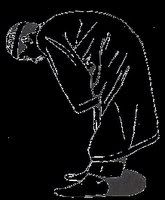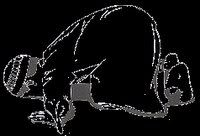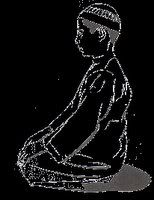Religion/Culture
The recent release of the film ‘Fitna’ has caused much turbulence around the world, especially in Muslim-dominated countries. It has concocted the meaning of Islam and has caused a lot of suspicion and confusion among those who have viewed it. Several political figures have also shared their disdain for the short movie.
This series of posts prepared by me with the help of reliable online resources is meant to clear some doubts and educate the general public about the true meaning of Islam.
I will first touch on the prayers. Many non-Muslim tpjcians have approached some of my friends and me about the way we pray. They often walk past the upper level staircase at the 3rd floor and seem curious about what we are actually doing. Here comes the answers:
Who do Muslims pray to?
Muslims pray to One God without associating any partners with Him. They pray facing the Holy Mosque in the city of Makkah. You will notice that the prayer mat, also known as the sejadah, is always facing a particular direction on a particular spot in school. Facing this mosque is simply for uniformity and homogeneity in the prayers of all Muslims around the world and not as an act of worship to the mosque itself.
Muslims perform obligatory prayers five times per day. Muslims will start preparing for the next prayers upon hearing the call for prayers.
What do Muslims say and do?
Muslims stand before their God by making the intention to pray, leaving all other chores and concerns aside.
While standing
While standing, the first chapter of the Quran is recited. This chapter can be translated as follows.“In the name of Allah, Most Gracious, Most Merciful. Praise be to Allah, Lord of the Worlds. Most Gracious, Most Merciful. Master of the Day of Judgment. Thee (alone) we worship and Thee (alone) we ask for help. Show us the straight path. The path of those whom Thou hast favoured; Not the (path) of those who earn Thine anger nor of those who go astray.” (1:1-1:7)

After the first chapter, any other passage from the Quran is recited. Following is a translation of one such passage.“Say: He is Allah, the One! Allah is He on Whom all depend. He begetteth not, nor is He begotten. And there is none like unto Him.” (112:1-112:4)
While bowing
Muslims then bow to God and glorify Him. This glorification can be translated as follows.“Glory be to my Lord, the Almighty.”

While Prostrating
To express complete submission and humility before God, Muslims then prostrate and place their foreheads on ground. According to the prophetic traditions, at this moment of humility, the worshipper is closest to his/her Lord. While prostrating, Muslims glorify God as follows.“Glory be to my Lord, the most High.”

Other than glorifying God, it is also a moment for Muslims to ask God for His forgiveness, mercy, blessings and bounties. Muslims then sit for a few seconds and prostrate one more time before standing up again.
Depending on the time of the prayer, Muslims repeat this cycle once, twice or thrice in each prayer.
While sitting
In the end (and also in the middle for some prayers) Muslims sit as shown in the figure. At this point they testify before God that there is none worthy of worship but Him and that Muhammad (peace be upon him) is His slave (meaning creation that is subject to it’s Lord’s commands at all times) and His Messenger. Muslims then ask God to send His peace and blessings on His Messenger Muhammad (peace be upon him) as He did on Prophet Abraham (peace be upon him). The translation is as follows.“All service is for Allah and all acts of worship and good deeds are for Him. Peace and the mercy and blessings of Allah be upon you O Prophet. Peace be upon us and all of Allah’s righteous slaves. I bear witness that none has the right to be worshipped except Allah and I bear witness that Muhammad is His slave and Messenger.O Allah exalt Muhammad and the followers of Muhammad, just as you exalted Abraham and the followers of Abraham. Verily you are full of praise and majesty. O Allah send blessings on Muhammad and the family of Muhammad, just as you sent blessings on Abraham and upon the followers of Abraham. Verily you are full of praise and majesty.”

At the very end, Muslims turn their face to the right and the left, sending God’s Peace on those surrounding them. This greeting of peace can be translated as follows.“Peace be upon you and the mercy of Allah”With this greeting, the obligatory prayer ends.We hope that this brochure was beneficial to you in understanding how Muslims pray the obligatory prayers. In addition to the obligatory prayers, Muslims may supplicate and glorify God at any time. It is commendable in Islam to be in a habit of unceasingly glorifying God and supplicating to Him.
The recent release of the film ‘Fitna’ has caused much turbulence around the world, especially in Muslim-dominated countries. It has concocted the meaning of Islam and has caused a lot of suspicion and confusion among those who have viewed it. Several political figures have also shared their disdain for the short movie.
This series of posts prepared by me with the help of reliable online resources is meant to clear some doubts and educate the general public about the true meaning of Islam.
I will first touch on the prayers. Many non-Muslim tpjcians have approached some of my friends and me about the way we pray. They often walk past the upper level staircase at the 3rd floor and seem curious about what we are actually doing. Here comes the answers:
Who do Muslims pray to?
Muslims pray to One God without associating any partners with Him. They pray facing the Holy Mosque in the city of Makkah. You will notice that the prayer mat, also known as the sejadah, is always facing a particular direction on a particular spot in school. Facing this mosque is simply for uniformity and homogeneity in the prayers of all Muslims around the world and not as an act of worship to the mosque itself.
Muslims perform obligatory prayers five times per day. Muslims will start preparing for the next prayers upon hearing the call for prayers.
What do Muslims say and do?
Muslims stand before their God by making the intention to pray, leaving all other chores and concerns aside.
While standing
While standing, the first chapter of the Quran is recited. This chapter can be translated as follows.“In the name of Allah, Most Gracious, Most Merciful. Praise be to Allah, Lord of the Worlds. Most Gracious, Most Merciful. Master of the Day of Judgment. Thee (alone) we worship and Thee (alone) we ask for help. Show us the straight path. The path of those whom Thou hast favoured; Not the (path) of those who earn Thine anger nor of those who go astray.” (1:1-1:7)

After the first chapter, any other passage from the Quran is recited. Following is a translation of one such passage.“Say: He is Allah, the One! Allah is He on Whom all depend. He begetteth not, nor is He begotten. And there is none like unto Him.” (112:1-112:4)
While bowing
Muslims then bow to God and glorify Him. This glorification can be translated as follows.“Glory be to my Lord, the Almighty.”

While Prostrating
To express complete submission and humility before God, Muslims then prostrate and place their foreheads on ground. According to the prophetic traditions, at this moment of humility, the worshipper is closest to his/her Lord. While prostrating, Muslims glorify God as follows.“Glory be to my Lord, the most High.”

Other than glorifying God, it is also a moment for Muslims to ask God for His forgiveness, mercy, blessings and bounties. Muslims then sit for a few seconds and prostrate one more time before standing up again.
Depending on the time of the prayer, Muslims repeat this cycle once, twice or thrice in each prayer.
While sitting
In the end (and also in the middle for some prayers) Muslims sit as shown in the figure. At this point they testify before God that there is none worthy of worship but Him and that Muhammad (peace be upon him) is His slave (meaning creation that is subject to it’s Lord’s commands at all times) and His Messenger. Muslims then ask God to send His peace and blessings on His Messenger Muhammad (peace be upon him) as He did on Prophet Abraham (peace be upon him). The translation is as follows.“All service is for Allah and all acts of worship and good deeds are for Him. Peace and the mercy and blessings of Allah be upon you O Prophet. Peace be upon us and all of Allah’s righteous slaves. I bear witness that none has the right to be worshipped except Allah and I bear witness that Muhammad is His slave and Messenger.O Allah exalt Muhammad and the followers of Muhammad, just as you exalted Abraham and the followers of Abraham. Verily you are full of praise and majesty. O Allah send blessings on Muhammad and the family of Muhammad, just as you sent blessings on Abraham and upon the followers of Abraham. Verily you are full of praise and majesty.”

At the very end, Muslims turn their face to the right and the left, sending God’s Peace on those surrounding them. This greeting of peace can be translated as follows.“Peace be upon you and the mercy of Allah”With this greeting, the obligatory prayer ends.We hope that this brochure was beneficial to you in understanding how Muslims pray the obligatory prayers. In addition to the obligatory prayers, Muslims may supplicate and glorify God at any time. It is commendable in Islam to be in a habit of unceasingly glorifying God and supplicating to Him.
How Many Sequences?
The morning prayer- Subuh is 2 sequences (rakaats).
The noon prayer- Zuhur- is 4 rakaats.
The midday prayer/ afternoon prayer- Asar- is 4 rakaats.
The sunset prayer- Maghrib- is 3 rakaats.
The evening prayer- 'Isha- is 4 rakats.



I think there's a mistake somewhere.
The prayer mat is known as "Sejadah".
The direction we pray to is known as the "Kiblat".
Thanks for alerting.